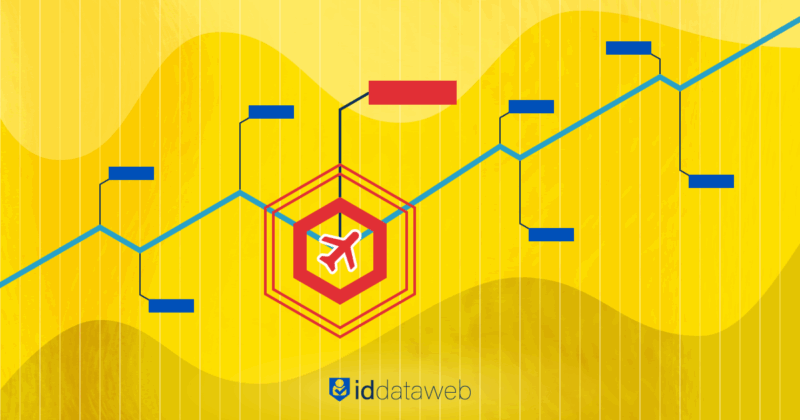Imagine waking up at 7 a.m. to a fraud alert from your airline app: all your loyalty miles emptied and resold. The attacker never learned your password; they replayed it—plucked it from an old breach file—until the service let them in.
For the attacker, it was simple: download a breach combo list, aim for a botnet at the carrier’s login, and wait for reused passwords to open the vault. That’s credential stuffing.
Examining the why and how behind credential stuffing attacks
Credential stuffing is an automated replay attack. Bots cycle through enormous lists of username‑password pairs stolen from unrelated breaches, betting on one probability: most people reuse passwords. When a match lands, the bot slips effortlessly into the account, bypassing phishing, malware, and social‑engineering speed bumps.
The tactic scales because the raw ingredients—credential “combo lists,” cheap residential proxies, and CAPTCHA‑solving APIs—cost almost nothing. Leaked combos remain cheap (often pennies per thousand) and automated tooling removes skill barriers. Akamai’s 2024 Securing Apps report counted 26 billion stuffing attempts every month, up nearly half in 18 months.
The anatomy of an credential‑stuffing attack
| Stage | Bot action | Why it works |
| 1. Harvest | Buy or scrape password dumps, stealer‑logs, and Genesis‑style market kits. | Combos cost pennies; fresh logs include device/IP hints. |
| 2. Automate | Feed lists into headless browsers; rotate residential IPs; outsource CAPTCHA solving. | Volume overwhelms rate‑limits and appears “human” enough to evade basic controls. |
| 3. Exploit | Drain stored value, resell subscriptions, change email / phone to deny access, or pivot to full ATO fraud. | The credential is already valid; no phishing needed. |
Business impact: why stuffing hurts long after the breach is patched
Credential stuffing rarely ends at login. Its ripple effects drain money, time, and customer trust long after incident response closes the ticket.
Direct financial loss – Refunds, charge‑backs, gift‑card laundering, and loyalty‑point restitution accumulate fast. Roku said fewer than 400 unauthorized purchases required reimbursement, but the reputational dent was broader.
Operational drag – Help‑desk queues surge with lockouts and forced resets. Peak events can triple call volume, driving overtime costs or SLA penalties.
Infrastructure bills – Bot traffic consumes bandwidth and server cycles. In API‑heavy apps, stuffing can mean millions of “free” requests the business must still pay to serve.
Regulatory exposure – Authorities view a reused‑password breach as preventable. GDPR guidance cites weak password hygiene and the absence of MFA as aggravating factors in data‑breach fines.
Brand damage & churn – Reuters reported a 2% share‑price dip for Roku after disclosure. Stock moves may recover, but user trust rarely bounces back that quickly.
Strategic distraction – Security and product roadmaps pause while teams bolt on emergency MFA flows, delaying revenue features and eroding competitive momentum.
These factors explain why IBM’s cost of breach research report found a $4.88 M average cost per breach. Yet even that number understates the soft costs that linger—like brand‑permission erosion and talent attrition when engineers fight bots instead of building features.
Why reused passwords still pay for attackers
Attackers exploit a pair of stubborn habits:
- Human convenience – Studies show 65% of consumers reuse passwords across at least three sites.
- Legacy authentication stacks – Many enterprises still rely on static credentials plus basic velocity rules. If the password is right, the session token lives—even if the device and IP scream fraud.
This gap between convenience and security is what modern identity orchestration needs to solve.
How ID Dataweb blocks credential stuffing attacks at the perimeter
D Dataweb views every login attempt as a bundle of signals. Two are decisive against stuffing:
- EmailAge risk bands – An attribute that assigns a 0‑to‑999 score (and simple 1‑to‑6 “risk band”) to any email. The model weighs mailbox age, domain reputation, social/breach history, and velocity of use across the EmailAge consortium. A high‑risk band (≥ 4) correlates strongly with compromised credentials and synthetic accounts.
- Device‑profiling assertions – ID Dataweb’s passive‑risk engine inspects OS, TOR use, emulator flags, impossible geo‑velocity, OFAC‑listed IPs, cloned session IDs, and more—without user interaction. A single “Device high‑risk indicator” assertion can auto‑deny or prompt step‑up authentication long before a breach can happen.
Together, these silent checks kill stuffing attempts in milliseconds, while real customers sail through unchallenged.
Layered IAM controls that break the kill chain
Credential stuffing is relentless, but it is also predictable. When identity teams layer complementary controls—each tuned to a different link in the attack chain—the business converts inevitability into a manageable policy problem.
Below is a recommended stack. Each layer assumes the prior ones already failed, creating defense‑in‑depth without excess friction.
- Credential screening at first touch – Compare email + username against breach corpora and EmailAge band ≥ 4. Auto‑deny, force reset, or shift to passkey enrolment.
- Adaptive MFA – Trigger step‑up only when passive signals flag abnormal device, proxy, or geo‑patterns. WebAuthn passkeys minimize user effort while eliminating OTP phishing risk.
- Bot mitigation – Tie front‑end session cookies to device‑fingerprint hashes; throttle velocity spikes; inject invisible challenges (JavaScript proof‑of‑work) that bots hate and humans never see.
- Continuous session analytics – After authentication, watch for impossible travel, sudden privilege escalation, or off‑hours API abuse. Evict a session instantly, not at next login.
- Resilient recovery flows – Harden password resets and email‑change requests with the same adaptive policy to prevent re‑compromise moments after cleanup.
Why lead with passive checks? Because they decouple friction/security tradeoff. Legitimate users experience a one‑click login; attackers vanish without ever seeing a challenge screen.
Why finish with continuous analytics? Because stuffing often seeds long‑tail fraud weeks later. Sessions that look fine today may weaponize stored payment cards tomorrow. Real‑time revocation keeps the blast radius small.
Together, these layers make stopping brute force attacks goes from a non-stop engagement, to a few policy decisions that are automated by a powerful decision engine.
Looking ahead to life after passwords
Credential stuffing will not disappear until reused passwords do. The good news: the ecosystem is shifting on three fronts.
- Passkeys everywhere – Apple, Google, and Microsoft now synchronize FIDO2 credentials across devices. Passkeys bind secret material to hardware, meaning a dumped database no longer unlocks anything.
- Identity Threat Detection & Response (ITDR) – Just as EDR revolutionized endpoint security, ITDR tools surface anomalous identity events—privilege‑escalation outliers, impossible travel, session hijacking—and feed them directly into SOAR playbooks for auto‑containment.
- Invisible risk signals – Advances in browser attestation (Web Environment Integrity, Privacy‑Preserving Device Integrity) will make it easier to prove that a login originates from a legit, non‑tampered stack—choking off botnets that rely on cheap headless instances.
- AI‑driven fraud prediction – Large models trained on trillions of risk events will forecast stuffing spikes hours ahead, allowing enterprises to pre‑emptively harden policies during the window of highest threat.
In short, the password’s monopoly is ending. Businesses that deploy credential‑agnostic identity layers—adaptive, orchestrated, standards‑aligned—will greet that future with confidence rather than costly surprises.
Conclusion
Credential stuffing flourishes where reused passwords meet static login flows. Using ID Dataweb’s millions of risk signals, security teams close that gap without frustrating customers. The result is a login experience attackers can’t replay and users barely notice—a quiet win that turns a once‑inevitable breach scenario into just another blocked request in the logs.











